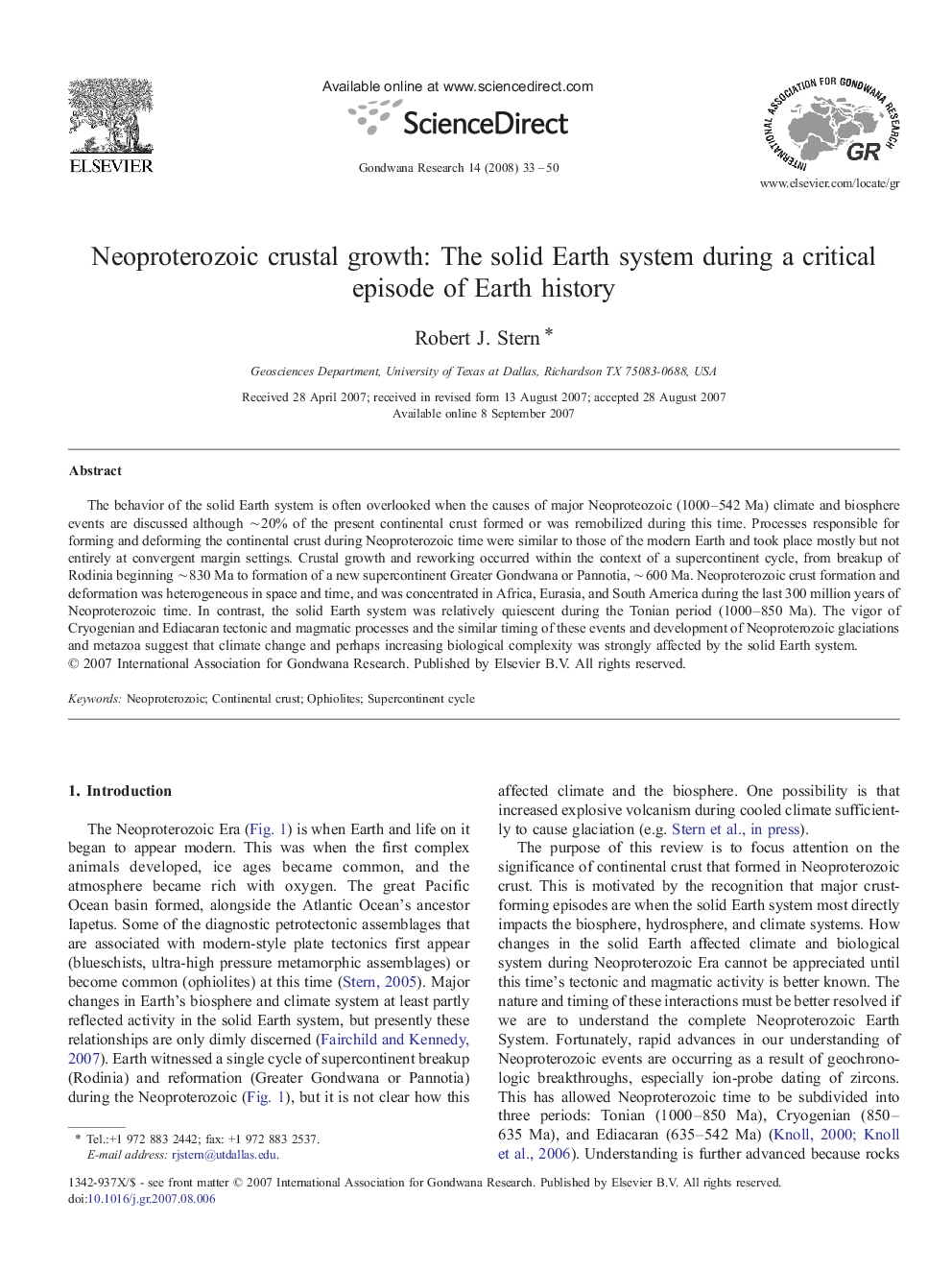| Article ID | Journal | Published Year | Pages | File Type |
|---|---|---|---|---|
| 4727941 | Gondwana Research | 2008 | 18 Pages |
The behavior of the solid Earth system is often overlooked when the causes of major Neoproteozoic (1000–542 Ma) climate and biosphere events are discussed although ∼ 20% of the present continental crust formed or was remobilized during this time. Processes responsible for forming and deforming the continental crust during Neoproterozoic time were similar to those of the modern Earth and took place mostly but not entirely at convergent margin settings. Crustal growth and reworking occurred within the context of a supercontinent cycle, from breakup of Rodinia beginning ∼ 830 Ma to formation of a new supercontinent Greater Gondwana or Pannotia, ∼ 600 Ma. Neoproterozoic crust formation and deformation was heterogeneous in space and time, and was concentrated in Africa, Eurasia, and South America during the last 300 million years of Neoproterozoic time. In contrast, the solid Earth system was relatively quiescent during the Tonian period (1000–850 Ma). The vigor of Cryogenian and Ediacaran tectonic and magmatic processes and the similar timing of these events and development of Neoproterozoic glaciations and metazoa suggest that climate change and perhaps increasing biological complexity was strongly affected by the solid Earth system.
